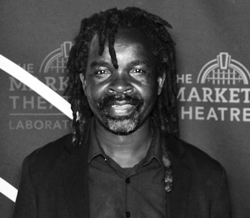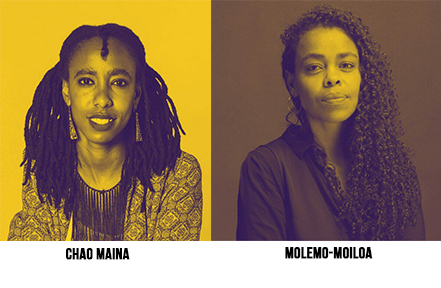Bring back looted African artefacts now, demands Open Restitution Africa
This powerful and emotionally charged message about the need for restitution for African art objects stolen during colonial times, now located in European museums is contained in a ground breaking campaign video. It was launched this week in Johannesburg, produced by South African and Kenyan activists.
By Edward Tsumele, CITYLIFE/ARTS Editor

Hundreds of thousands of African objects that our ancestors created for different reasons that include utilitarian and ritualistic purposes have been looted and transported ashore and most of which found homes in European museums during colonial times. Some However some European custodians of these art objects argue that in fact some of the objects were gifts and were therefore legitimately acquired by their ancestors from for example, African Kings and Queens and therefore, cannot be said to have been stolen –at least some of them.
However activists of contemporary Africa argue that all these objects, estimated to be over 500 000, must be returned to their rightful owners, the descendants of the creators of these objects from different parts of the continent, from Cape Town to Cairo in a process they prefer to call restitution. A classic example of these are the Benin Bronzes that are today found in a German museum and those in the British Museum. However there are others that are found in other places, such as in Belgium, looted mainly the DRC Congo during King Leopold’s reign of terror when he treated that country as his personal possession.
However whichever way one looks at this subject, it is a contentious issue, whose resolution is not going to be easy, at least during this generation. The controversy has many aspects to it. First even to call these artefacts, objects, is today contested by activists, as this term is seen to diminish the cultural importance of these artefacts. Some of these objects are actually even more emotionally charged, such as human remains of our ancestors.
There two classical examples in Southern Africa being that of Saartjie Baartman of South Africa and Ambuya Nehanda of Zimbabwe. Saartjie Baartman, the so called Venus Hottentot was shipped to Europe for the entertainment of Europeans mainly for her so called unusually huge genitalia. She was used as some sort of circus animal, naked and making money for her handlers. Baartman died as a miserable human animal, far away from her native South Africa. Her remains ended up in a French museum, preserved there for ‘scientific” study. Her remains were only brought back to South Africa in 2000 after much noise and lobbying from activists. She was eventually given a decent funeral after so many years of suffering both in her life time and in her death after enduring being displayed as a human freak in a French museum.
Another example of human remains being displayed in European museums is that of Zimbabwean freedom fighter and a rebel against British colonialism Ambuya Nehanda, whose remains suffered the same fate as those of Saartjie Baartman in a British museum as her head was displayed there as a form of an example of British conquest over a native freedom fighter whose crime was to rebel against colonialism. These are just two examples. But there are several others. Both of well-known and lesser known African ancestors that are still in these museum institutions in the West.
On Wednesday, Octo0ber 4, 2023, I attended the screening of a documentary which looks at the issue of restitution for these stolen objects at Bioscope, 44 Stanley, Milpark, Johannesburg, where a team from Open Restitution Africa, comprising South African and Kenyan activists and researchers, producers of this ground breaking documentary made a strong case for restitution for the looted objects, including the human remains.
Several issues emerged in a discussion after the screening. For example activists in the continent are currently formulating new vocabularies to define these stolen African things.
“Even the term object is problematic. There is currently a debate about finding a new vocabulary to define these things stolen and looted from Africa. Further, even the term human remains when it comes to describing our ancestors whose remains are found scattered in European museums, is equally problematic. Increasingly activists prefer to use ancestors, as these in fact are our ancestors,” said Molemo Moiloa, (Andani Africa) South Africa. She one of the executive producers of this well researched and superbly directed 22 minute documentary.
“The looting of these artefacts came in different ways, including punitive action (against rebelling African nations by colonists) whereby they looted the objects as punishment. Another form was through missionaries, who took these objects to their countries, and yet the very same missionaries discouraged Africans for adoring these very same artefacts as they said they were evil. There was yet another way of looting, and that is for “scientific’’ purpose,” explained another activist from Kenya Chao Maina, also an executive producer of the documentary.
The producers revealed there are more episodes to follow that will look at other aspects of the campaign to get these objects back on the continent. Such as excuses that those that hold onto the loot give for not wanting to surrender what belongs to the continent, and the issue of some museums dumping what actually are valueless objects in their possessions, while holding into those that have value.
But there is also another issue in the mix, and that is whether African museums have the infrastructure to handle such a huge volume of these objects if or when they are returned. This is especially because some of the objects are fragile and need special care and specialist knowledge to look after them in museums. This point is quite crucial given the fact that not many African countries actually have such infrastructure and African political elites across the board, are notorious for their ignorance of the value and importance of culture in their respective countries. The ruling elites, almost in all African countries often starve government departments dealing with the arts, resources. Museums continue to be under budgeted compromising the art collection in these museums, and therefore meaning less public education about the intrinsic value of art and culture in society.
“This is about the agency of the matter of restitution. The issue of whether or not we as Africans are ready to take care of the artefacts, is a matter that we would have to deal with once the issue of restitution has been achieved,” said the Kenyan producer of the documentary. This was in answer to my question about the capacity and the political will of the African political elite to handle such massive artefacts once and if returned to various African countries from where they originated.
Apart from the debate around the process of restitution, the need to find new vocabularies when it comes to defining and describing the African artefacts in European museums’ display cabinets and store rooms, and the logistics of bringing back the objects and the costs thereof, the documentary is powerful and emotionally charged. For example, when the Kenyan producer of the documentary Maina asked the audience immediately after watching the documentary to say one word to describe what they felt, she was met with an immediate spontaneous response: “Angry.” Maybe a more appropriate response should have been in three words:”Angry and informed”, for this documentary is about that. It is informative and also leaves one seething with anger about what happened to African art objects during colonialism and of course our ancestors. This is a documentary that every public broadcaster worth to be described as such on the continent, should grab and screen on their various channels.
The producers for now said that they were looking at screening the documentary on social media video channel Youtube. Look out for it in the coming few days. It will leave you angry, but more importantly more informed about the African treasure that still adorn the walls and display cabinets of European museums at our own expense as descendants of the artists and societies that produced them.










